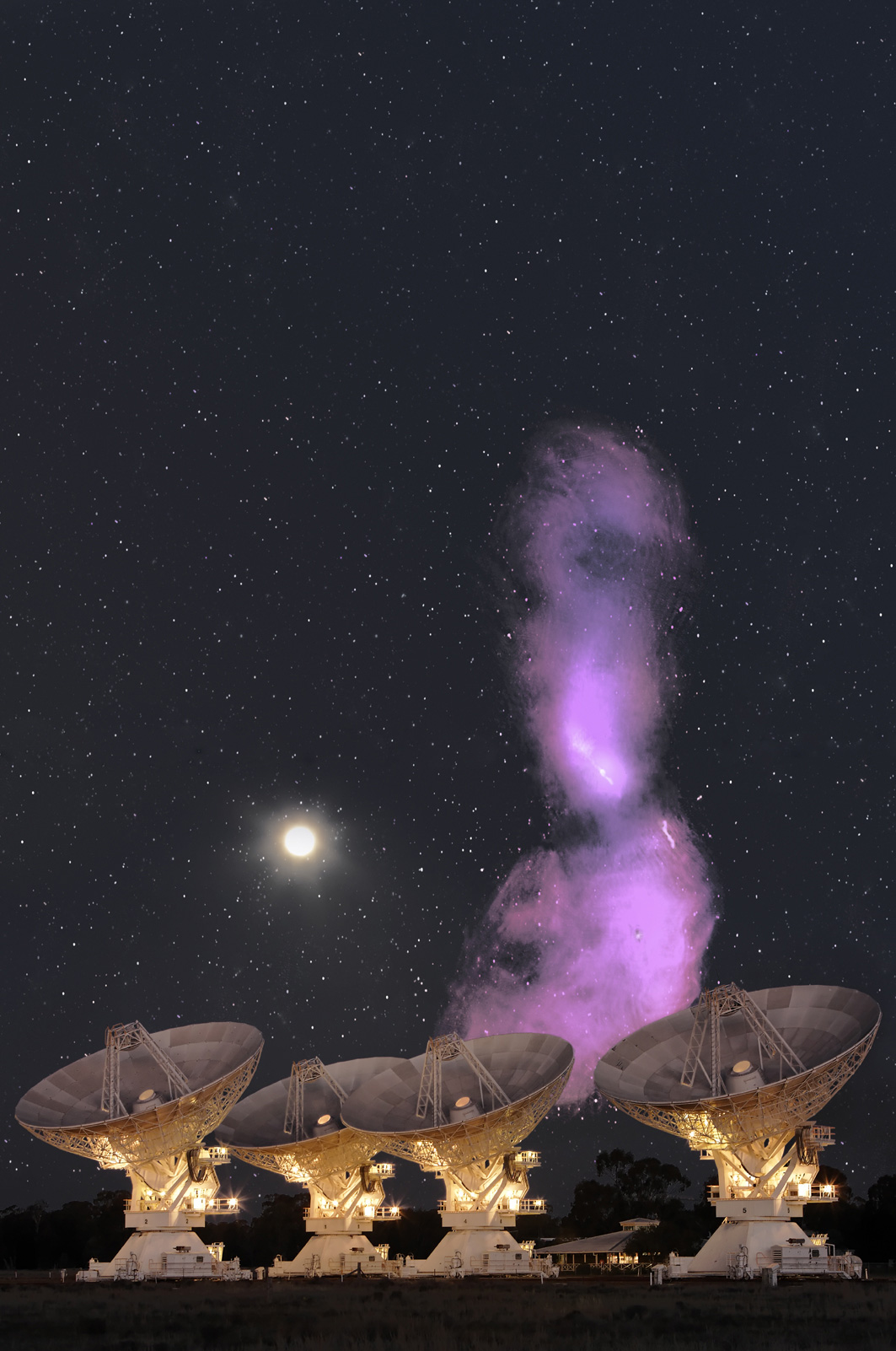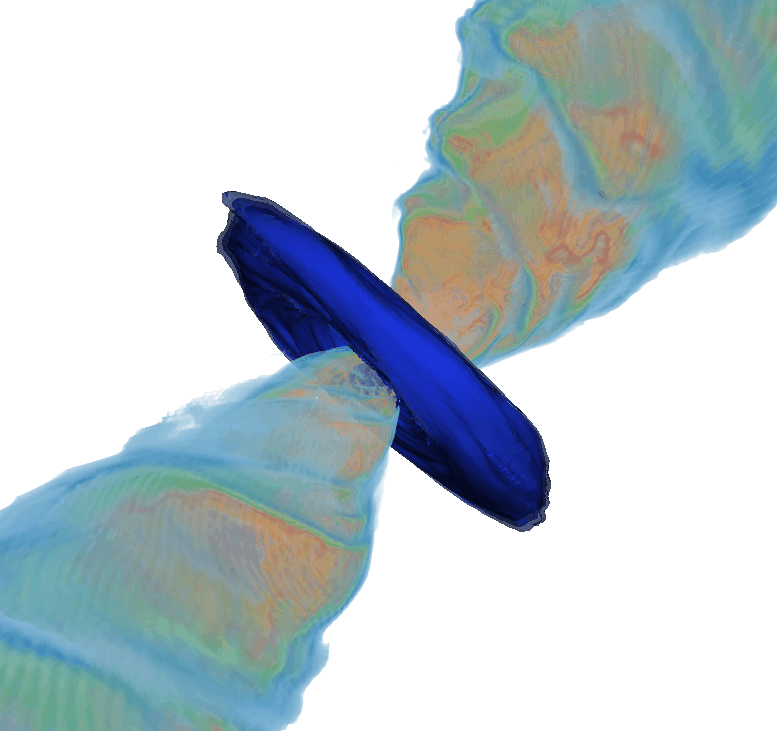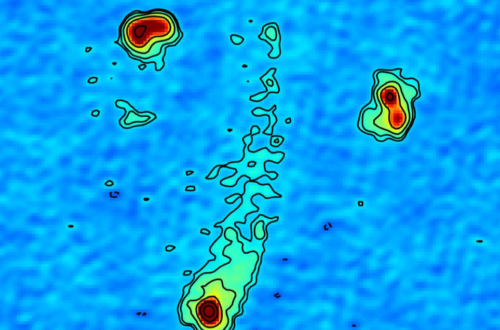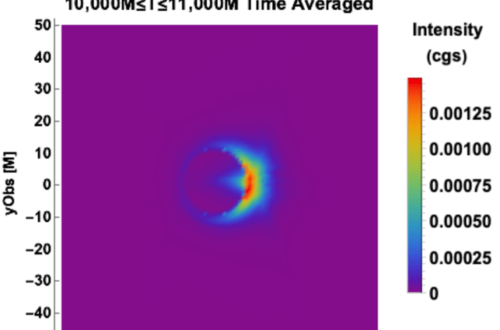
You must have noticed the spectacular image shown above. The purple haze shows the radio emission of relativistic jets belonging to the nearby galaxy Centaurus A. Here the object is projected in its actual size as it would be seen on the sky if its light were visible to the human eye. This stunning example spans 1,000,000 (!!!) light years across the sky, and many more jets such as these can be found. (If you’re wondering about that shining globe on the left, that’s the full Moon for scale)
But what creates those jets exactly? At the center of this huge system in Centaurus A (at the small dot in the middle with a higher intensity) lies an object 55 million times heavier than our Sun. It’s a black hole! Black holes are objects so dense that even light can’t escape from them. They can’t emit any light themselves, but the matter around them does. Black holes pull huge amounts of gas towards themselves (mainly hydrogen atoms). As a result of something like friction between the particles, the temperature around the black hole increases. Due to this heat, the hydrogen atoms start to separate into free, charged particles (protons and electrons). As the gas is pulled inwards, it starts spinning quickly around the center (much like a figure skater pulls their arms towards their body to increase the speed of their pirouettes). Consequently, each black hole possesses a very dense, hot, rotating disk of free charged particles. This is what we call the accretion disk, because it consists of the matter that is being collected by (or accreted onto) the black hole.
Importantly, moving charges are the necessary ingredient for creating magnetic fields. The charges in the accretion disk are moving at incredible speeds and are gathered in large numbers. This and other effects such as turbulence produce extremely strong magnetic fields near black holes, especially in the regions above and below the disk near the very center (at the “poles”). Although astrophysicists are still working out the details (and that is what we do in the group!), these changing magnetic fields near the poles can start to function something like a cosmic launching tube. Any matter that ends up near the poles will then be propelled into space at speeds of the same order as the speed of light (~0.5c for this example). Since this can happen at both poles of the black hole, objects can have two jets in opposite directions ranging across humongous distances. In the image shown above, astronomers happened to observe such a phenomenon stretching across the sky. These jets are moving perpendicular to our line of sight. In case you’re having trouble to visualize the launch of such jets, I have produced an animation of the black hole simulations done as a collaboration between our and Michiel van der Klis’ research groups (by students Matthew Liska, Koushik Chatterjee, David van Eijnatten, and me). The multicolor cones are the highly magnetized regions of the jets, while dark blue delineates the high density regions of the accretion disk. Enjoy the show!




